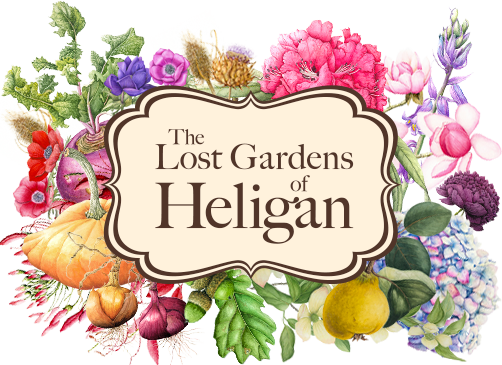Zinnia Planting Along the Apple Arch
Share
This week, a splash of vibrant summer colour is being planted along the apple arch in the heart of Heligan’s Productive Garden.
Gardeners Andy, Martin and Katie have been carefully placing rows of young zinnia plants at the base of the espaliered trees - continuing a tradition that has become a seasonal feature of this central pathway in recent years.
Zinnias are long-flowering annuals, known for their bright, daisy-like blooms and loved by butterflies for the wide landing pads of their central discs. By midsummer, these flowers will be in full bloom, forming a vivid corridor alongside the apple arch that draws both the eye and the insects.

While zinnias are often celebrated today for their ornamental value and ability to attract pollinators, the historic role of flowers along the apple arch at Heligan served a slightly different purpose.
During the Victorian era, floral displays like these were planted to create a colourful distraction for visiting gentry as they walked through the working gardens. Bean rows would grow tall on either side of the paths, shielding the hard labour of the gardeners from view, while the flowers helped mask the more pungent smells of manure and compost that came with productive horticulture.

Many of the blooms grown in the Kitchen Garden were also cut for use in Heligan House. It’s recorded that at one point, 72 vases of fresh flowers were arranged for the rooms of the estate - a powerful reminder of how the beauty of the garden extended far beyond its borders.
Today, the bee boles built into the wall between the Flower Garden and the Kitchen Garden still speak of a time when bees were kept close, their pollination efforts supporting vegetables, fruits, herbs and flowers alike.
As you walk beneath the apple arch in the coming weeks, take a moment to notice the zinnias. They are more than a flourish of colour - they’re part of a long, layered story about productivity, presentation, and the rhythms of the garden across time.


